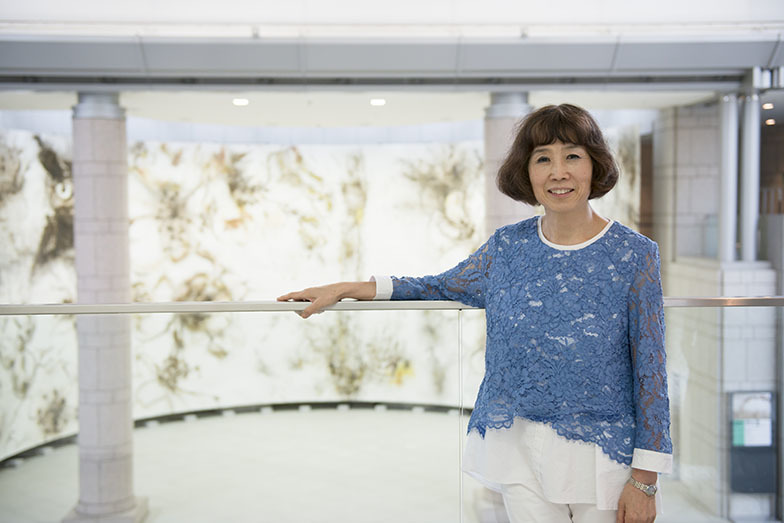We focus on and hear from "promoters of successful expressive activities" across various fields.
One major characteristic of contemporary art is that artists live in the same era as us today. They possess the ability to see about three steps ahead of the present time, creating works by examining a single subject from various angles and through multiple perspectives. This characteristic is what makes contemporary art profound.
There are various stages to appreciation. First, simply come to the museum and experience it. Start from whether you find the work interesting or boring, whether you like it or dislike it. Then, in the next step, by tracing the artist's diverse perspectives and expressions, you hone your own thinking and eventually become independent as an individual. I believe that is the ultimate goal. Independence means acknowledging and coexisting with people who hold different thoughts and values, and standing with a broad perspective, possessing multiple viewpoints to make your own choices.
One thing contemporary art has given me is the ability to look beyond an artist's name, reputation, or critical acclaim, and focus on how to interpret what lies beneath the work. Simply put, it's like not judging people by their titles. I learned how to engage with artists I knew nothing about, or expressions I didn't even consider art. It broadened my capacity for human tolerance.
In modern times, all values have become equalized, and in a way, life has become incredibly difficult. While the world becomes increasingly convenient, we're drowning in a constant torrent of information, losing sight of what we truly need. Choosing what to keep and what to discard is difficult, but this is an era where we must make those choices ourselves. We must decide for ourselves what is right for us and how we should be as human beings. In this context, the challenges, depth, different perspectives, and diversity of contemporary art have been incredibly beneficial for me in engaging with the world.

My foremost concern is how to convey the potential of contemporary art to as many people as possible. First, we must open the windows wide. Most people react to contemporary art with "I don't quite get it." But there is no single correct way to appreciate art. The Yokohama Triennale is a vital opportunity to overcome preconceptions and discover how fascinating contemporary art can be. I see it as a grand window, inviting many people to experience the true essence of contemporary art.
Today, artworks are truly diverse and varied. They no longer fit neatly into just one category of fine art; they span fashion, language-based works, pieces exploring themes like space science, and much more. At an international art festival like the Yokohama Triennale, with nearly 100 participating artists, I believe you can encounter works that resonate with you personally or find a starting point for your appreciation.
Similarly, a solo exhibition by a single artist also opens a large window. Cai Guo-Qiang, currently exhibiting at the Yokohama Museum of Art, is an artist who, beyond China, lived in Japan for about nine years and now works in New York. He creates while ruminating on cultural differences, the histories of various countries and regions, and their values and ideologies. Therefore, presenting his exhibition now feels deeply meaningful, as it connects with the societal circumstances we are facing.
This time, we've included works making their Japanese debut and pieces with strong visual impact that will make everyone think, "Wow, that's amazing," aiming to draw out the thoughts and emotions of a wide range of visitors.
Contemporary art has a wide window, but its depths are profound. Not everyone needs to love contemporary art, but personally, stepping into this world has taught me so much. I want to share that experience with as many people as possible.





